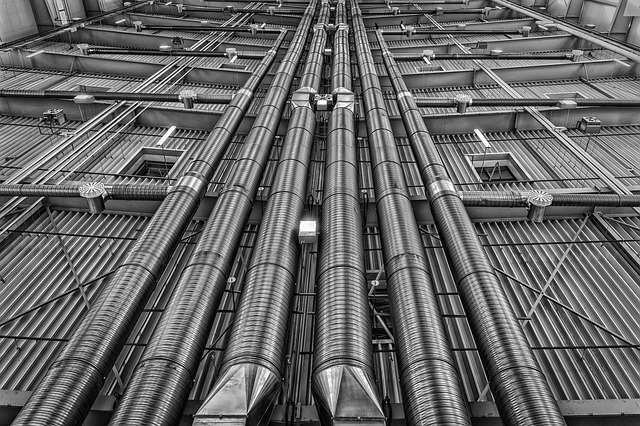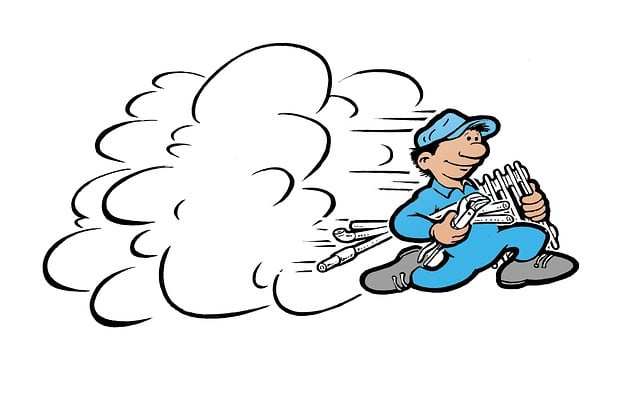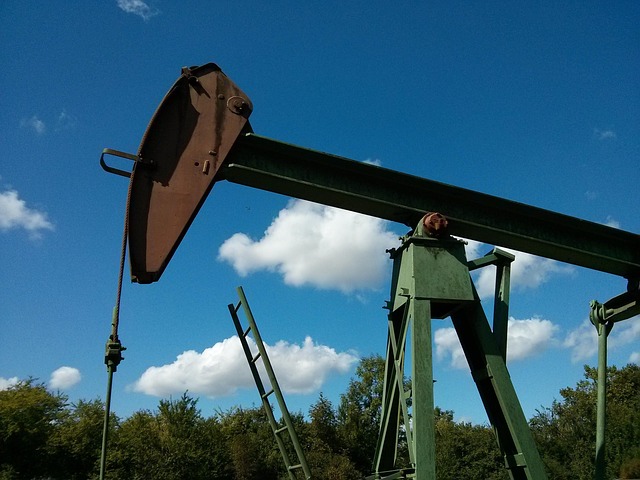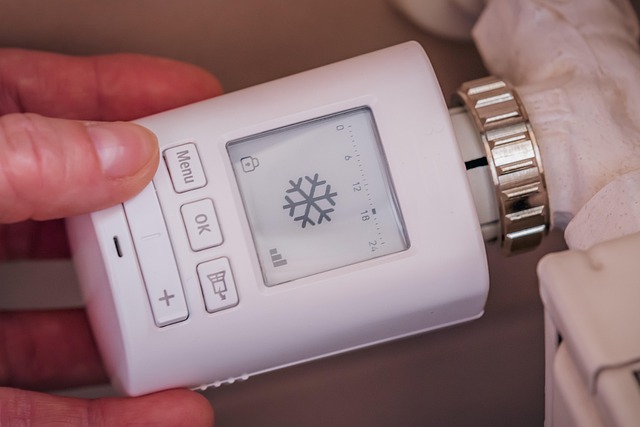Commercial gas hot water heaters are designed for easy maintenance and peak performance, with strategic components like burners, heat exchangers, and pressure relief valves. Installation requires careful planning and safety adherence. Modern models use condensing technology for enhanced energy efficiency, while high-capacity systems cater to demanding commercial applications. Common issues include pilot light problems, vent obstructions, and dip tube inspections. Advanced technologies ensure sustainability and user safety, extending equipment lifespan with reliable water heating solutions.
“Elevate your business’s comfort and efficiency with a floor-mounted commercial gas hot water heater, designed for seamless maintenance. This comprehensive guide explores the key features that make it a standout choice, from easily accessible design elements to crucial component care. We’ll walk you through installation, troubleshooting common issues, and essential safety considerations. Discover how this heater can revolutionize your space while ensuring optimal performance and environmental sustainability.”
- Design Features for Easy Access
- Key Components and Their Maintenance
- Installation and Setup Procedures
- Troubleshooting Common Issues
- Environmental and Safety Considerations
Design Features for Easy Access

The design of a floor-mounted commercial gas hot water heater plays a pivotal role in ensuring hassle-free maintenance and optimal performance. Key features include easy-access panels that allow technicians to swiftly inspect and service components like burners, thermostats, and pressure relief valves. This streamlined approach not only facilitates regular upkeep but also promotes the longevity of the unit.
Furthermore, many models incorporate innovative designs such as condensing technology, which captures heat from exhaust gases, enhancing energy efficiency in both gas fired heating and hot water production. High capacity water heaters capable of catering to the demands of restaurant hot water, hotel water heating, and institutional systems are also available, ensuring ample supply for commercial applications. Tankless gas systems offer an additional advantage by eliminating storage tank heaters, promoting space-saving installation and further contributing to energy conservation.
Key Components and Their Maintenance

A commercial gas hot water heater consists of several key components crucial for its efficient operation and easy maintenance. The burner is a central element responsible for igniting the fuel, transferring heat to the water, and ensuring consistent performance. Regular cleaning of the burner and its surrounding area is essential to prevent debris buildup, which can hinder efficiency and safety.
Other critical parts include the heat exchanger, which facilitates the transfer of heat from the flame to the water, and the pressure relief valve that protects the system from overpressure. Condensing technology in modern commercial hot water systems not only boosts energy efficiency but also requires periodic cleaning to maintain optimal performance. For high-capacity water heaters used in restaurants or hotels, regular inspection and maintenance of institutional systems are vital to ensure reliable hot water supply for diverse applications.
Installation and Setup Procedures

The installation and setup of a floor-mounted commercial gas hot water heater involve several key steps to ensure optimal performance and easy maintenance. First, carefully position the heater in the desired location, ensuring ample space for ventilation and accessibility. This strategic placement facilitates regular servicing and allows for quick troubleshooting. Next, securely fasten the heater to the floor using appropriate anchors or brackets, adhering to manufacturer guidelines for stability and safety.
Once the physical setup is complete, connect the gas supply line following local building codes and regulations. Proper gas piping ensures efficient fuel delivery and safe operation. Additionally, integrate any necessary electrical components, such as control panels or thermostats, according to the system’s design. The use of condensing technology in high-capacity water heaters can significantly enhance energy efficiency, reducing operational costs for commercial hot water systems, especially in restaurant and hotel settings where demand is constant.
Troubleshooting Common Issues

Many common issues with floor-mounted commercial gas hot water heaters can be easily resolved with some basic troubleshooting steps. If the water temperature is inconsistent or low, check the pilot light—a simple relight may be all that’s needed. Ensure proper airflow by inspecting vents and ensuring they’re free from obstructions for optimal gas fired heating performance.
For situations where the heater isn’t producing enough hot water, consider checking the dip tube to make sure it’s in place and functioning correctly. Tankless gas systems, or high capacity water heaters, may require periodic flushing to remove sediment buildup, enhancing energy efficient heating over time. These institutional systems, including those used in hotels and restaurants, often incorporate condensing technology for enhanced performance and reduced environmental impact.
Environmental and Safety Considerations

In the context of commercial gas hot water heaters, environmental and safety considerations are paramount. These robust devices, designed for easy maintenance, also prioritize sustainability and user safety. High-capacity water heaters, including tankless gas systems and storage tank heaters, play a crucial role in institutional settings like restaurants and hotels, where reliable and efficient water heating is essential. Integrating condensing technology into commercial hot water systems offers significant energy savings, making them more environmentally friendly alternatives to traditional gas fired heating.
Beyond functionality, these commercial hot water systems are engineered with safety features to mitigate risks. Proper ventilation and pressure relief mechanisms ensure the safe operation of gas-fired heating units, preventing potential hazards associated with buildup or defects. This attention to detail not only extends the lifespan of the equipment but also guarantees a secure environment for users, making them ideal solutions for demanding institutional systems.
A floor-mounted commercial gas hot water heater, with its strategic design features, offers unparalleled accessibility for maintenance. By understanding key components and their care requirements, along with straightforward installation and troubleshooting guides, businesses can ensure optimal performance from these essential appliances. Embracing environmental and safety best practices further underscores the importance of regular maintenance for any commercial gas hot water heater.
